
How to Limit Screen Time with Healthy Habits & a Bigger YES
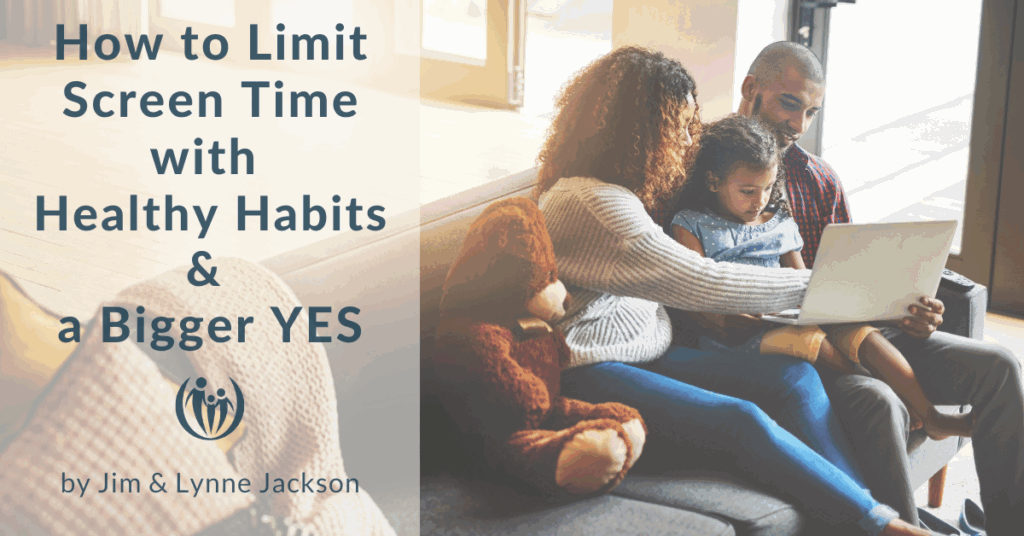
Does screen time in your home cause serious stress? And do you worry about it damaging relationships? Do your attempts at limiting screen time turn it into the prized forbidden fruit? You are not alone. We know our kids are growing up in the 21st century and need to know how to use technology, but it’s a double-edged sword. For some children, their first exposure to screen time can make them want more and more. And screen time might start to feel unhealthy…
The fact is, cultivating healthy screen habits in kids (or adults) is not easy. Screen time needs limits (again, for kids and adults), but focusing on the limits often backfires. This continues to be one of the most common struggles we hear about from parents.
Fact: Kids are on screens often, sometimes because they need to be
Your kids are on a screen for school. Or when you try to occupy them during your conference call. Or when you take a shower. Or maybe because you need to have a conversation with your spouse.
And, because kids usually enjoy their time on screens, they don’t naturally exhibit self-control when it comes to screens. But probably a lot of us don’t either.
Parents often tend to randomly vacillate between high control because they have concerns about their child’s screen use and leniency because they just don’t want to fight anymore. Is it possible to find a balance?
Note: Check out this podcast to hear Jim and Lynne talk about foundational issues that can be a game-changer in challenges about screens. They’ll also do some role-plays for lots of practical ideas!
The goal: a healthy relationship to technology

So, first, what are healthy screen habits? What does a healthy relationship with technology look like?
That’s easier asked than answered. In some ways, it’s easier to start by identifying unhealthy screen habits.
Relationships (we’ll get into why later on) play a big factor in how healthy or unhealthy a screen habit is. Think of these two scenarios:
- Watching a movie with family for two hours
- Playing a single-player video game alone in your room for two hours
Neither is intrinsically good or bad, but they are quite different experiences, aren’t they?
Signs of too much screen time (and even screen addiction!)
There are certain habits that are more closely associated with screen addiction. (Yes, screen addiction is real.)
In fact, in research looking at children ages 4-11, Dr. Sarah Domoff and her colleagues found certain behaviors indicative of a problem. Children with the behaviors listed below were more likely to develop screen addictions later in life.
These are the nine factors considered in the Problematic Media Use Measure:
- Unsuccessful control. It’s hard for your child to stop using screen media.
- Loss of interest. Screen media is the only thing that seems to motivate your child.
- Preoccupation. Screen media is all your child seems to think about.
- Psychosocial consequences. Your child’s screen media use interferes with family activities.
- Serious problems due to use. Your child’s screen media use causes problems for the family.
- Withdrawal. Your child becomes frustrated when he/she cannot use screen media.
- Tolerance. The amount of time your child wants to use screen media keeps increasing.
- Deception. Your child tries to hide their screen media use or access it without your knowledge.
- Escape. When your child has a bad day, screen media seems to be the only thing that helps him/her feel better.
Basically, any habit that leads to the above nine factors is an unhealthy screen habit. The more of these nine factors you see in your kids, the more serious the problem.
Now, it’s important to note that the time spent on screens is not on the list. Because, again, different screen activities are not equal.
Read about one child’s Minecraft addiction
What does this look like in real life? Read about how one family navigated their son’s pretty serious Minecraft addiction in our article, “What Do You Do with a Minecraft Addiction?“
But all screen time is unhealthy screen time, right?
Not quite.
While there has been a lot of media coverage of the very real problems and concerns with technology, that’s not the full story.
Yes, tech giants are having their kids opt out of tech-rich lifestyles. That’s worth noting.
Other articles suggest smartphones have “destroyed a generation,” citing depression, anxiety, and suicide rates.
But real studies on teens with phones are more mixed. In fact, if you want to get deep into it, here’s a great study about teens and phones.
But no matter the research, it’s not as much about time on the phone or playing games. It’s a lot about the type and quality of screen time.
And mentorship and wisdom.
You, as the parent, have the honor of mentoring your child into healthy screen habits.
Growing healthy screen habits takes time
Let’s reverse the Problematic Media Usage list. Rather than focusing on what is unhealthy, let’s focus on what healthy screen habits might look like:
- Controllable
- Your child can use a screen and get off a screen peacefully to comply with agreed-upon limits.
- Limited
- There are many other activities in your child’s life that interest them. Screen time is just one thing, and it has a set time and place.
- Your child talks with enthusiasm about non-screen-related activities.
- When they’re having a bad day, sometimes they might ask for screen time, but many times they look for cuddles, conversation, or fun outdoor activities.
- Purposeful
- Screen time is usually purposeful and harnessed for good. Not only is it not causing social problems, but it’s adding value to the world or strengthening relationships.
- Sometimes you and your child watch something together for bonding.
- Maybe your child is participating in a digital talent show, participating in an online fundraiser, creating engaging content for shut-in older relatives, or building a website to help with a problem they see.
- Out in the open
- There’s nothing to hide, and there’s no opportunity to hide either.
There is no formula here. Moreover, it’s not our place to tell you what your family’s screen rules should be or what boundaries you should set around the screens in your home.
The goal is to cultivate healthy screen habits. Given that, it makes sense to evaluate any family screen rules based on what’s healthy. It makes sense to keep these four indicators of health in mind while making rules. Of course, that’ll look different in each family and during each phase of life.
Our goal is to help you approach whatever your family’s rules are in a way that deepens your connection to your children while growing your children in wisdom.
How to limit screen time: Start with the Framework
We approach parenting struggles from the Connected Families Framework of connect, coach, and correct, from a foundation of safety. Always.
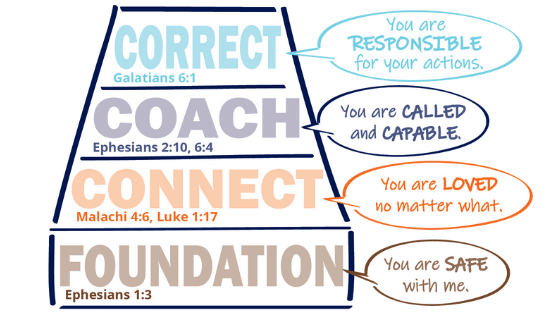
When you discipline or teach a child, the messages you may be sending can become their identity. We always want to make sure those messages are:
- You are safe.
- You are loved.
- You are called and capable.
- You are responsible.
(If you are not familiar with the Connected Families Framework, watch the three-minute video on this page.)
You might be asking the question: but HOW do I teach healthy screen habits?
Wouldn’t it be nice if there were a formula, or just a series of steps, to limit screen time and, voila, end up with a healthy, balanced child who knows exactly when and how much screen time is best for their own needs?? The truth is… there is no formula. The key is to have parents and kids working together toward a clear vision for your family.
For that, let’s use the Framework.
FOUNDATION: You are safe with me, even if glued to the screen
A solid foundation for parenting is built on God’s grace and truth for you and your kids. When you receive and pass on that grace and truth, it enables you to be a safe person to your child, regardless of their behavior. Some practical questions that guide “foundation thinking” are:
- “What’s going on in me about this issue?”
- “What’s it like to be my child?”
- “What is God’s grace and truth for both of us?”
Thoughtful consideration of these questions helps lay a strong foundation of safety in the relationship.
Ask, “What’s going on in me?”
In this podcast, we discussed how my (Lynne’s) own anxiety increased the tension between our teenage son and me. When I stopped and asked myself, “What is going on with me?” I noticed I felt more anxious when he was playing video games compared to whenever he was doing something else. Moreover, he was sensing that anxiety when it was time for him to get off the screen, and it aggravated our conflict.
I also became aware of negative judgments I had formed in my own mind about him: that he was lazy and lacked self-control. Kids can often sense these kinds of judgments, and they can be an internal voice about who they are.
When we realize we have judgments about our child, it’s helpful to ask ourselves, “What is the truth about my child from God’s perspective?”
We can reframe our beliefs about our kids to be in line with God’s grace and truth:
- “My child was made for God’s good purposes.”
- “My child is called and capable.”
This perspective will guide you toward much better interactions with your kids, because you won’t be responding out of anxiety. Anchoring in God’s grace and truth helps you relax, do less managing of behavior, and do more motivating toward creative, purposeful activities that are a fit for your child’s gifting.
Consider what it’s like to be your child struggling with screen time limits
The second helpful question parents can ask themselves is, “What’s it like to be my child in this situation?”
Whether your child is glued to a Daniel Tiger marathon, Fortnite with friends, or a TikTok session, the challenge for kids and their brains is SO much more than we might anticipate! Yes, screen time needs limits, but neither your brain nor your child’s naturally likes those limits. It helps you to have compassion for your kids when you understand the intensity of what you are up against when you ask a child to end their screen time.

Remember the movie “Big”? There is a line from the movie that accurately describes the motivation of video game companies: “If we can get them to put the first quarter in, they’ll never stop!” Clearly, that has been successful!
Understanding the addictive nature of screens in general, and specifically what is happening in your child’s brain chemistry when they are on screens, is vitally important. It will help you have compassion and be prepared, not surprised, about what might happen when it’s time for kids to get off a screen. It’s really hard for kids and adults to engage in healthy screen time!
Research behind screen addictions
One study found that dopamine doubled while study participants were playing video games. Dopamine is a neurotransmitter, and it feels good! The stimulation of the screen combined with the excitement and rapid pace of a game stimulates a similar brain reward response (dopamine!) as any other addiction (sugar, sex, drugs, food, gambling). This stimulation may feel especially rewarding for discouraged or unmotivated kids.
Interestingly, if you have teens on smartphones and social media, it’s again a similar dopamine mechanism at work. Note: this is true for you too!
One interesting study actually ranks the amount of dopamine released during certain pleasurable activities. The results might surprise you!
“Unchecked dopamine is the root of all addictions,”
Dr. Eva Ritvo
Psychiatrist Dr. Eva Ritvo explains that when dopamine levels are elevated, and the two other “happy” chemicals in our brain, serotonin and oxytocin, are not, it leaves you cognitively impaired. Your brain just wants another, bigger rush, so you can experience more dopamine.

Interestingly, serotonin and oxytocin increase from meaningful human touch and relationships. Of course, video games, even if they are interactive with friends, aren’t usually high on meaningful relating.
Clifford Sussman, MD, explains the mechanism by which this happens. Video games are known as a High Dopamine Activity (HDA) and have a high level of excitement and immediate rewards. Other slower-paced screen activities (such as YouTube) may be Low Dopamine Activities (LDA), which provide less intensity and possibly a more delayed sense of gratification. Board games, homework, and chores are also examples of LDA. When your child’s brain has engaged in a high-dopamine activity, the transition to a low-dopamine activity is going to be challenging!
Plan easier transitions off the screen to help real-life “regain relevance”
Humans are naturally wired for community and connection. Sharing a favorite meal with loved ones or enjoying a concert with friends gives us uplifting bursts of dopamine. So, it’s no surprise that stepping away from activities that provide these dopamine boosts—like screens—can be challenging. To ease the transition, kids may need something just as enjoyable to help them shift their focus.
Transitioning off of video games had been very difficult for our son, and one day we asked him at the age of twenty, “What was it like each time when you had to get off a video game as a teenager?”
His response was extremely telling: “It took a while for real life to regain its relevance.”
This statement describes the transition from high to low dopamine activities from a kid’s perspective. Remembering it can help you have compassion and make the transition easier.
Adjust expectations, and avoid moving your child directly from screens to a “low excitement” activity like homework or chores.
Make a plan to help your child through the difficult transition off their screen to an engaging, real-life activity. Consider making a favorite snack, doing some big muscle play, going for a bike ride, or playing a little frisbee.
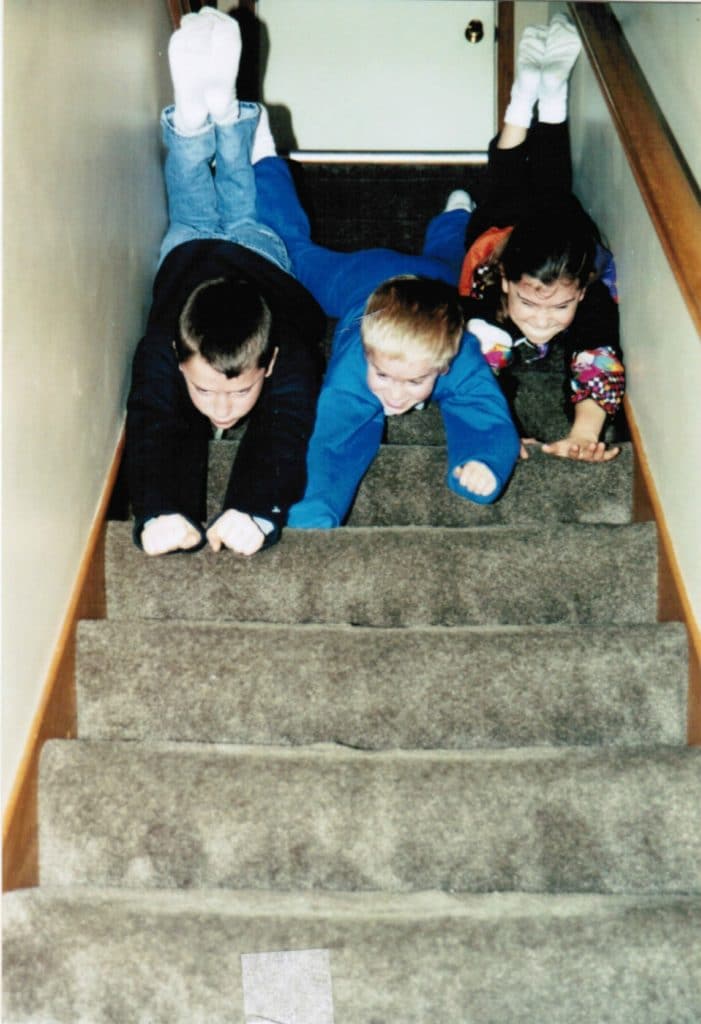
Your willingness to engage with your child in their transition activity can make a big difference. It helps them feel truly cared about, not just managed.
When parents “put some skin in the game” instead of just making and enforcing rules, kids usually respect and value that effort. They may just put some of their own “skin in the game” toward peacefully resolving the family’s power struggle over screens.
The BIGGER YES: It wasn’t just about limiting screen time
Anchoring in God’s grace and truth means you parent with a clear purpose instead of a desire to control. When you focus on your family’s unique purpose and vision, you become a safer parent because you communicate, “I’m truly for your ultimate well-being and God-given purpose in life.”
This perspective, that we all have a purpose, is deeply scriptural. Research shows that children who connect with the love of God and are involved in serving others are at much lower risk for unhealthy behaviors.
But saying no to screen time doesn’t really mean kids will find their purpose. Children need guidance and a positive focus to develop those alternative interests. It takes time and sensitivity to find out what it is that they love about their screen activities and how you could help them express that in the three-dimensional world.

Do you have a child with BIG feelings and BIG needs?
The Sensitive & Intense Kids online course is a game changer. It’s for YOU.
Putting your own time and effort into helping your child
Putting our own time, effort, and even money into empowering our son toward God’s purposes for his life was the “game-changer” for our screen conflict with him.
Before that, there was an escalation of the power struggle. We thought a lock on the computer room door was a solution. Next thing we knew, he was bragging about “breaking and entering” to play his games.
That was a wake-up call.
So we reversed direction and asked for forgiveness for our angst and unhelpful responses. We fully leaned into believing that he had a God-given calling to make a difference in the world and worked to nurture that.
“For you know that we dealt with each of you as a father deals with his own children, encouraging, comforting and urging you to live lives worthy of God, who calls you into his kingdom and glory.”
1 Thessalonians 2:11-13
1 Thessalonians 2:11-13 expresses the heart of this approach: “For you know that we dealt with each of you as a father deals with his own children, encouraging, comforting, and urging you to live lives worthy of God, who calls you into his kingdom and glory.”
We had many discussions with our son about how to balance screen time with creative alternatives that were a fit for his unique bent. He gradually understood that screen time was a “dessert for the brain” and he needed a real-world “healthy diet” to thrive in life.
The BIGGER Yes was worth the cost
We paid the price both literally and figuratively as we said YES to his non-screen interests. We bought a digital camera and gave him the use of our old camcorder, and scrap wood. These things provided three-dimensional real-life fulfillment of the adventure, creativity, and conquest that he was seeking in his computer games.
Each of those activities required parent involvement – Jim worked on his tree fort and coached his golf team, and Lynne helped with costumes and props for making his crazy videos with siblings and friends. Many of these activities incorporated blessing others as well as having lots of fun!
As you apply these ideas, you can think about both the big picture vision and God’s purposes for your family, as well as the practical characteristics of healthy screen habits, which we discussed at the beginning. Then you can begin to pray through specific goals for your family’s screen use.
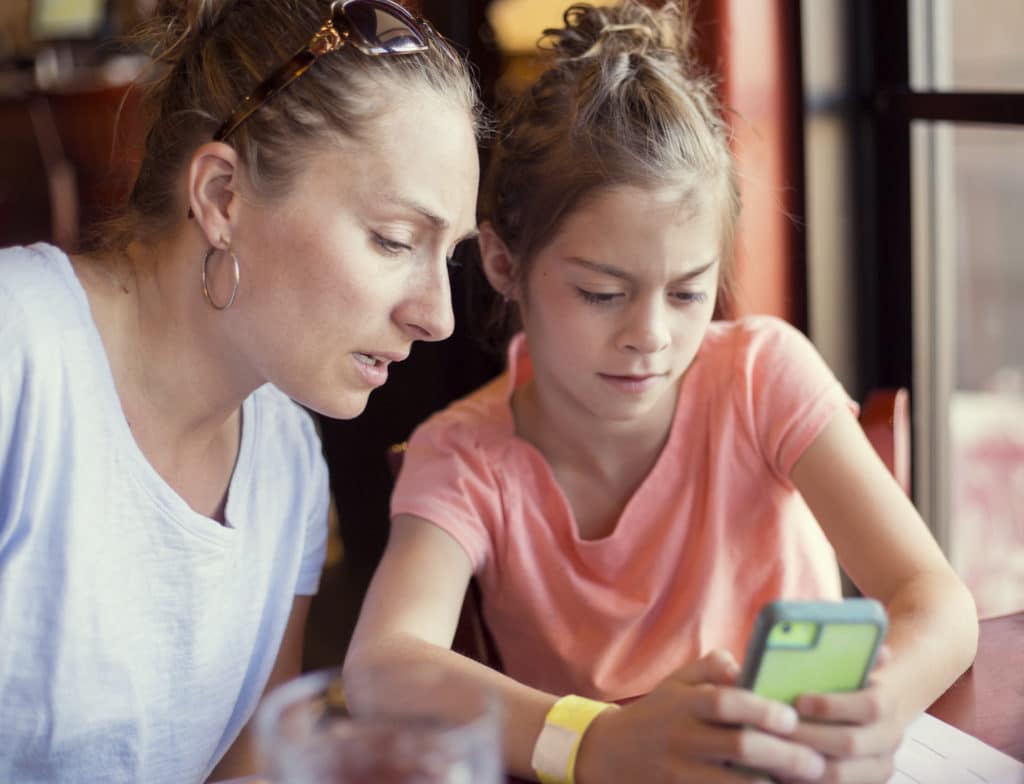
Set goals for your family to cultivate healthy screen time habits that go beyond limitations
Don’t just set screen time limits. Think about the bigger goal of what you want your family to learn.Teachers often make “Students will be able to” statements to guide their educational goals. You might do the same for your child. For example,
- At age 30, my child will be able to ________________. (make wise screen choices, value and nurture meaningful relationships, prioritize important responsibilities, etc.)
Or, you could give a more visionary statement, such as:
- Our family aims to ____________.
- Our family is preparing each other for __________.
Some of your vision statements will be specific to a particular child, and others will be more general to your family as a whole. That’s okay.
Ask God for insight. Prayerfully take some time alone to get grounded in the purpose and vision God has for your family. Then share and revise these goals with your kids. You will all be more prepared to thoughtfully navigate the next conflict.
CONNECT: You are loved, even if you fight getting off a screen
Your struggling child needs to know your love. It’s hard when mired in the screen use conflict. However, now is the time to move toward the struggling child with kindness and connection, not away with frustration and judgment. A playful and empathetic spirit will help prevent a wedge of mutual resentment over screens.
Find ways to show your child you enjoy him! Join in what’s important to your child, even showing your ineptness at the screen activity he or she loves and is so good at. Laugh at yourself as your child teaches you the ropes. And consider, in general, when is there joy in your relationship, and how could you do more of that?
Meaningful connection shows your child that you have his best interests at heart, even when it doesn’t feel like it.
Engage in calm conversation over chips and salsa, or chat while playing catch in the backyard. Sometimes you may choose to use these moments to discuss challenging situations, such as screen conflict. Other times, just embrace the connection and giggle over their latest impression of that movie you saw as a family.
Remember, it’s easiest to connect in conversation on significant topics like screens at a different time, outside the conflict.

And if this just seems like general parenting recommendations, not specific to screens, let’s clear the air on this issue. Connection is vital to fighting addiction.
How meaningful connection mediates addictions
In the 1970s, an American researcher, Dr. Bruce Alexander, transformed our understanding of addictions. Previously, research seemed to indicate a very sobering reality. Rats left alone in a cage with a bottle of water, and a bottle of water with added heroin or cocaine, would always drink the drug-infused bottle to the point of overdose and death. (We realize that the use of animals this way is frowned upon in today’s scientific community, but the lesson here is powerful, so we’re sharing it with the suggestion that you don’t try this at home.)
This led to a “You try, and you die” mentality about drugs. It was predetermined. Like rats, people simply could not combat addiction.
But Dr. Alexander noticed something about these experiments: they were simplistic. Who lives alone in a cage with just two water bottles?

Rats in community are different than rats in isolation
Dr. Alexander created what has come to be known as the “Rat Park” experiment. He put rats together in a so-called rat park, with room to roam, exercise, and socialize with other rats. He then included the two drug-laced bottles, as well as plain water.
Remember how all the rats in isolation died of an overdose? That was not true of the rats in the park colony. They tried the drug-laced stuff and then preferred the water.
Of course, this also fits with what Dr. Eva Ritvo explained about serotonin and oxytocin. Our bodies produce serotonin through meaningful connections and oxytocin through touch, and these two “happy” chemicals mediate the addictive rush of dopamine (which screens and drugs stimulate).
Remember how all the rats in isolation died of overdose? That was not true of the rats in the park colony. They tried the drug-laced stuff and then preferred the water.
In our current times you can provide meaningful connection
Your children need you more than ever. To successfully avoid or overcome screen addiction, kids especially need meaningful connection and touch from their families.
Make silly faces, play a board game, or go for a run together. Do the things your children love—maybe even play video games or make a TikTok with them!
Investing in your relationship with your child is always wise, but if they’re struggling with the addictiveness of their phone or video games, it’s vitally important.
COACH: You are called to and capable of healthy screen time and limits
Just like coaching a sports team, the most important work to develop new skills happens before “game time,” not in the heat of the moment. If you want kids to develop a skill, help them to both value it and practice it before they need to use it.
Teach and remind your children of the long-term purpose and vision you hold behind any screen time limits. Talk about the vision statements you came up with in the Foundation section of this article. Having a clear vision puts all habits, including screen habits, into perspective.
Coaching your kids well communicates to them, “You are capable of making good decisions.”
Just like a sports coach, you know what you’re asking them to do is hard. If you’ve clearly communicated why and shown that you are for them, not against them, kids are fueled to better rise to the challenge!
You can let them know, instead of waiting till they mess up and then revoking screen privileges (maybe your previous default), your goal is for them to be set up for success so they can get their maximum allotted time on their screens and feel good about being responsible with it.
Coaching your kids well communicates to them, “You are capable of making good decisions.”
How To Put Screens Back in Their Place | Ep. 34
Check out our podcast on this topic to hear real-life examples and role-plays and scripts you can start using today!
Coach your kids to value healthy screen habits
- Model it.
- This is a tough one! Check your own screen use.
- “Am I putting away my phone to listen to my child? Am I modeling wise screen use in my own daily routine?”
- Be humble. Ask your child how you’re doing with your own screen time.
- Notice any growing maturity in your child and affirm the growth you observe.
- Teach that screen time is a privilege, not a right.
- Discuss the conflict with your child.
- “How does everybody feel when we have a conflict about getting off screens?”
- “What difference does that make in our relationship?”
- You can even ask if there is anything good about the conflict you’re having.
- In the podcast roleplay, I (Lynne) affirmed that my “child” had been honest with me. Acknowledging and affirming your child’s honesty is a powerful way to bring peace into a conflict! I (Jim – in the child’s role) felt so good about the affirmation. It deflated my desire to resist.
Problem-solve screen challenges with empathy
It increases a child’s buy-in if he or she feels understood and has significant input into solutions (during calm moments).
Empathetic Problem-Solving = You want… + I’m concerned… + How can we make this better?
- State the problem from the child’s point of view: “You want…” This shows that you understand what he is feeling and what is important to him.
- For example: “You want to stay online and finish the game so you don’t let other players down. Teamwork with your friends is important to you,” or “You want to finish the level for a sense of accomplishment. You get so excited when you level up.”
- State the problem from your point of view: “I’m concerned…”
- For example, “I’m concerned that you have lost some of that awesome creativity where you invent your own fun.”
- Or, “I’m concerned that the conflict that often happens around getting off is taking a toll on our relationship.”
- Once you’ve identified what’s important and what’s concerning to you both, you can ask, “How can we make this better?” You can facilitate ideas with: “When it goes a little better, what does each of us do that’s helpful?”
Set the max screen limit for respectful, independent screen use.
Set up an “end goal” for the maximum amount of screen time you’re comfortable with, but let kids know that “privilege comes with responsibility” and that amount of time (i.e., an hour a day) is only available to them if they are independent and respectful in getting off their screens. For example, 30 minutes might be a privilege for kids who need multiple reminders, post-it notes, etc., and an hour for kids who are independent.
If you’re not yet sure how to create screen time rules, the American Academy of Pediatrics has a tool for creating Family Media Plans. Check it out.
Maybe in your house, you’ve decided healthy screen time means giving each child x-number of minutes on the gaming system or phone. That’s great. Now you’ll need some boundaries in place.
Healthy screen time limits
Here are a couple of examples of boundaries you might want to establish together:
- If you turn off the computer, phone, TV, or tablet late, you lose screen time the next day.
- If you argue about losing screen time, you lose it for two days.
- If you turn off the computer, phone, or tablet early, the extra minutes roll over to the next day with a 10-minute “responsibility bonus,” meaning the child can have an extra long screen time the next day.
The more your child knows about what will happen, the less conflict there will be when it’s time to turn the screen off. The goal is to set them up for success.
Adjust the amount of help kids receive to get off their screen to be the “Just Right Challenge” for them.
Help your child determine: Do they need a reminder? If so, what is it? A Post-it note on the screen? A touch on their shoulder? Or are they independent enough to confirm with you that they are off before the timer rings?
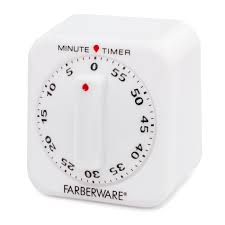
For a more independent child, a clock or timer by the computer might be all they need as a cue for when screen time ends. As they are learning to manage their time, they may choose to play only one round of a game and then go on YouTube or TikTok, so it’s easier to end on time.
Ideas for helping younger kids with screen time boundaries
Younger children usually benefit from concrete visual reminders of behavioral expectations.
Here are some examples:
- Before they get on their screen, you can show them the post-it note “coupon” they’ll get if they exit respectfully: e.g., Wednesday, 30 minutes of screen time for Josh.
- Toward the end of play, the child gets a 5-minute warning, then a 1-minute warning.
- When the timer goes off, the child must have the screen already cleared to earn tomorrow’s screen privilege. Either hand them the post-it note or, for older kids, give an immediate thumbs up (or down) and record the result on a calendar.
Practice, practice, practice screen boundaries
Once you’ve figured out how much help your child needs to get off the computer, practice your plan in a couple of mock scenarios (after only a few minutes of computer time). Make sure your child understands these are only mock scenarios, so the emotions are low:
- Your child pretends to turn the screen off late (no screen time tomorrow).
- Even as you tell them they’ll not be getting screen time tomorrow, have the child practice not arguing.
- Encourage your child that they’ll get screen time the day after tomorrow if there’s no arguing.
- Your child practices getting off the screen before the time is up.
- Celebrate that they got off on their own!
- Encourage them that they will get their screen time tomorrow, with an extra bonus. (You can actually give them that extra bonus for their next session.)
Even with thoughtful preparation, coaching, and practice, getting off the screen might still be stressful for kids. Remember the brain chemistry they are fighting, and keep encouraging them. Try to affirm whatever went a little better each time.

60 Ways to Get Kids Moving and Laughing
Fun movement helps keep everyone sane!
This list of over 60 ideas includes activities to calm angsty kids, as they also gain strength, balance, and coordination… all with a good dose of learning and laughter.
CORRECT: You are responsible for maintaining healthy screen habits
Remember, healthy screen time means healthy screen time habits. It is your child’s responsibility to keep up the healthy habits that guard their screen time.
Be prepared that even after you and your child connect and agree on a plan for ending screen time, there will be days when everything falls apart. Calmly, after things have settled down, let your child know they will lose some screen time.
Don’t be surprised when your child is upset about the consequence. Things could even get a little ugly. If you expect a fairy-tale ending to every interaction that increases your anxiety and frustration if your child struggles.
If we expect a fairy-tale ending to every interaction with our kids, that’s our anxiety wanting everything to be perfect.
Everybody falls apart sometimes, and your kids are no different.
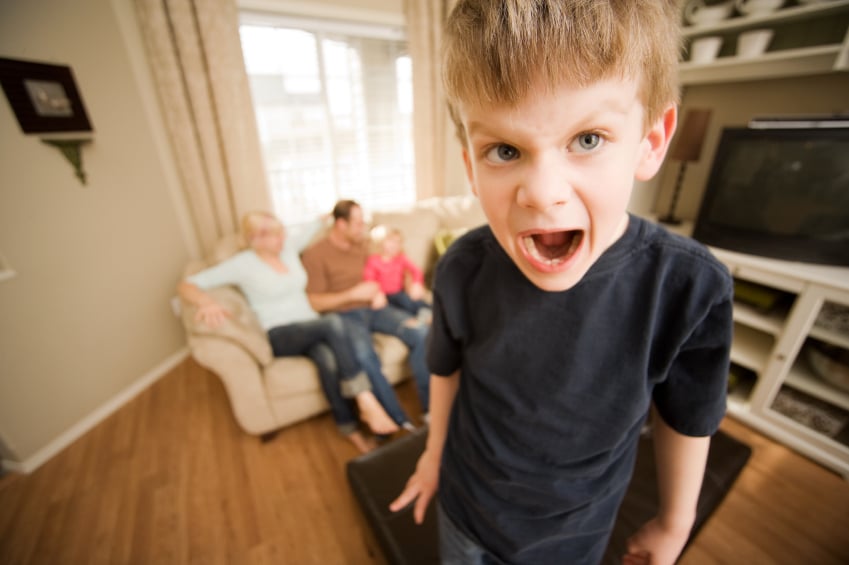
If things re-escalate, allow time for both of you to cool off. Then create a calm environment to discuss the issue again with your child. Invite your child to go throw a ball around or talk about it over a favorite snack.
Be calm and kind but firm. You may decide to use the “You want + I’m concerned + how can we make this better ?” strategy again, but don’t allow bargaining or begging.
Remind them of whatever rules and boundaries you’d agreed upon: “This is what was decided would happen until things improve.”
When screen time isn’t healthy
If there is persistent, explosive conflict when screen time is done, you may need to take a break from screens for a while and regroup after things settle down a bit.
Keep connecting, even while correcting.
If your child feels discouraged, you might remind them, “Since screen time is not an option today, I will be available to spend some extra-special time with you.” Let your child pick a fun activity for the two of you to enjoy together.
When correction is hard, the goal is not to punish the child, so they don’t want to mess up again. Instead, move toward your struggling child with connection and a goal to grow wisdom and skills.
Be ready for self-sacrifice. Teaching screen time boundaries involves a lot of self-sacrifice.
- First, there’s the sacrifice of your own screen time desires. Be mindful of how you are using your phone when in front of your kids. Maybe even narrate what you are doing, “I’m ordering groceries, does anyone have any special requests?”
- Secondly, when they mess up and have lost screen time, the best antidote to their dopamine loss is more connection, quality time, and fun with YOU. That may mean putting away your to-do list and agenda.
What if you are doing your best and screen time still feels unhealthy?
There could be deeper issues going on. While more true screen addiction is more rare than we think, it is a real thing! For teens, screens can also be complicated with pornography, cyberbullying, and other serious issues.
If your kids continue to struggle with screen time limits, it’s time to enlist help. Investing in your family through parent coaching may be the best decision you ever make.
Remember, every small step you take to set loving screen time boundaries plants seeds of trust and connection in your family. With God’s guidance and grace, you’re building a foundation of hope—one choice at a time.
Prayer for families struggling with screen habits
Lord, I thank you that you are so gracious and patient with us in the midst of this struggle, that your mercy is overflowing to me and my kids. You know the potential you have built into each child. I ask for your special guidance for me. Give me the wisdom I need to come alongside my kids and guide them toward your purposes. Help me to truly connect with and encourage them well.
© 2023, 2025 Connected Families





